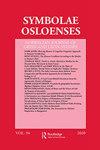The Iliad, the Odyssey, and Narratological Intertextuality*
IF 0.1
3区 历史学
0 CLASSICS
引用次数: 3
Abstract
This paper discusses four distinctive Homeric narrative features where an intertextual relationship between the Iliad and the Odyssey can be discerned: (1) the narrator's choice to begin the narration mid-fabula, pitching the narratee in medias res; (2) the narrator's initial declaration of a theme in the proem and the subsequent duplication of that theme in the course of the narrative; (3) the creation of a sense of narrative closure through scenes involving fathers, and a related use of fathers as unseen characters in the narrative; and (4) the use of interlaced storylines and of a related continuity of time principle. The poet of the Odyssey must be understood on several occasions to recur not to any quasi-transcendental repertory of narratological techniques, but to the narratological techniques that were specifically deployed in the Iliad.《伊利亚特》、《奥德赛》与叙事学互文性*
本文探讨了《伊利亚特》和《奥德赛》的四个荷马式叙事特征,从中可以看出它们之间的互文关系:(1)叙述者选择在寓言中开始叙述,将叙述者置于媒介之中;(2)叙述者在文章中首先声明一个主题,随后在叙事过程中重复该主题;(3)通过涉及父亲的场景创造一种叙事闭合感,并将父亲作为叙事中不可见的人物进行相关使用;(4)使用交错的故事情节和相关的时间连续性原则。我们必须理解,奥德赛的诗人在很多情况下,不是重复使用任何准先验的叙事技巧,而是在《伊利亚特》中特别使用的叙事技巧。
本文章由计算机程序翻译,如有差异,请以英文原文为准。
求助全文
约1分钟内获得全文
求助全文

 求助内容:
求助内容: 应助结果提醒方式:
应助结果提醒方式:


